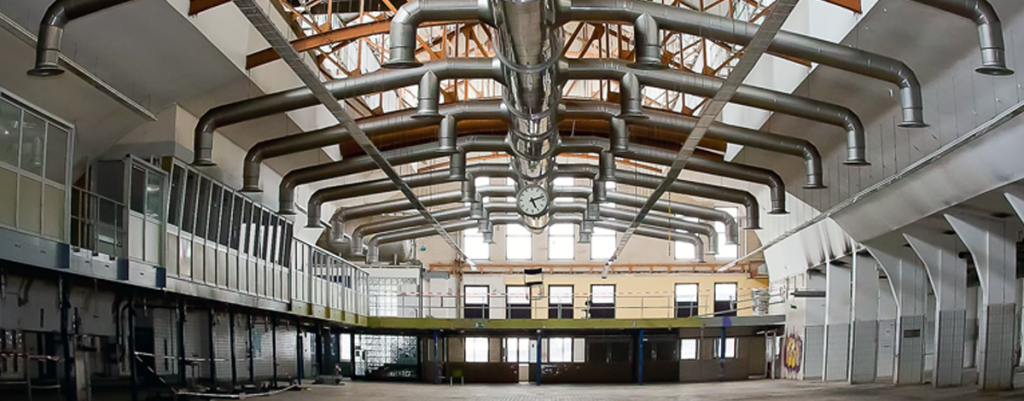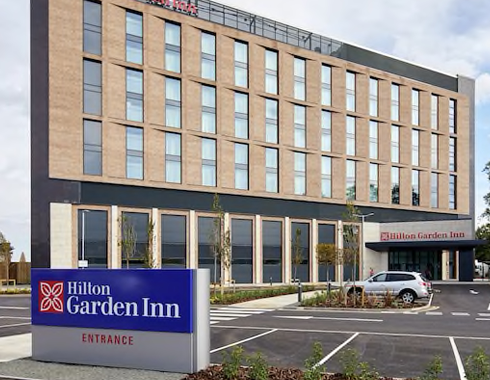Fresh air is vital for life. As humans, it’s not just an optional extra, we need it to survive. In an ideal world, we’d all be constantly breathing clean, pure air, outside in a beautiful natural environment. Unfortunately, modern life dictates that we often have to spend much of our lives in crowded, unnatural environments and buildings where fresh air is a not given.
Good ventilation is the key to ensuring that people sharing any kind of public space, whether it’s a cinema, a shopping centre or a busy office, get the access to fresh air that they need to be healthy.
The health risks of polluted air and poor ventilation
Every year, 50,000 people die in the UK as a result of air pollution. Polluted air is rarely visible to the eye, and everyone breathes in air pollution. It can ultimately lead to severe issues such as lung diseases, including cancer, asthma and COPD.
As well as the diseases associated with lungs and the respiratory system, it can also lead to other conditions such as heart disease and dementia. It’s also been associated with premature births. Lung and brain damage to children cannot be reversed and they may suffer from this for the rest of their lives.
What does polluted air consist of?
Polluted air is created from a variety of sources, primarily traffic and industry. It will frequently include particulate matter, nitrogen oxide, nitrogen dioxide, smog and soot. Carbon dioxide, fine dust, volatile organic compounds, moisture, mould and carbon monoxide can all become problematic within public buildings. Ultra-fine dust in particular can penetrate deep into the lungs and can cause cardiovascular disease due to the fact that this type of fine dust can also enter the bloodstream.
What is ventilation and how can it help?
Ventilation is the process through which dirty, contaminated and stale indoor air is replaced with fresh air from outside the building. There are two ways that this can happen; naturally and mechanically.
Natural ventilation may happen via air infiltration or leakage through cracks and openings in the building. Or it may be something as simple as opening the window of the office to allow in more air.
Mechanical ventilation is when the airflow is distributed through fans and ductworks that are laid intelligently throughout the building. Air is then distributed in the room via air terminal devices and diffusers. In most public spaces, a combination of mechanical and natural ventilation will be used to keep air circulating and the environment safe for public use.

Why is ventilation so important?
Indoor workplaces, shopping centres, gyms and other public spaces need to be properly ventilated. If you’re spending a large amount of working time in these spaces, then a poorly ventilated building will be detrimental to your health for a variety of reasons.
Control impurities
If you work, travel to or live in a city or other built up area, the air quality may not be particularly good. Even when you’re inside a building the air may be polluted. In many cases it might be even more polluted than outside because dirty and impure air isn’t circulating. Impurities build up creating a heavily polluted and unhealthy environment.
A good ventilation system will help to filter out and expel purities. It will also prevent the build-up of pollutants, bacteria, moisture and unpleasant odours.
Regulate airflow
Building without proper ventilation systems in place will have no control of the air flow into your building. The advantage that a mechanical system may have over natural ventilation is that the latter may have a dramatic impact on the temperature, particularly in colder climates during the winter. Too much fresh air might mean costly energy bills.
Good ventilation will help to control the air in the building, while regulating to the required health and safety levels. Well-regulated airflow helps to create more comfortable atmosphere for everyone in the building while keeping a lid on running costs.
Stop condensation
Condensation can be a problem. In public buildings, particularly buildings with large expanses of glass and hidden corners that suffer from poor natural ventilation, condensation can rapidly become a problem. Condensation in itself may seem harmless but it helps to create a damp environment within which mould and mildew can rapidly build up.
Wood and other materials may begin to rot. Significant mould can hide and grow out of sight, rapidly becoming a problem for people who are allergic to its spores. Mould can cause respiratory problems, and if people are spending significant amounts of time in buildings with a damp environment the consequences for their health can be severe. For that reason, well-designed and functioning ventilation systems need to be in place to help reduce the risks.
Health benefits
One of the key aspects of efficient ventilation systems in public, commercial and other buildings where large numbers of people gather is the impact that it has on health. This aspect of ventilation has come under increased focus for policy-makers over recent years, with ventilation being key to reducing the transmission of viruses within the building.
As well as the issue of virus transmission, a good ventilation system will have a positive impact on overall health and well-being for users of the building. There are a number of problems that can be created by poor ventilation within a building. These include headaches and migraines, allergies, asthma, rashes and sinusitis, dry throat and eyes, concentration disorders, fatigue, shortness of breath, drowsiness and dizziness.
Over time, people in a poorly ventilated space, particularly in industrial and manufacturing plants, may develop chronic colds or respiratory problems, asthma and other lung diseases. Prolonged exposure to polluted air can lead to cardiovascular disease and cancer.
Poor ventilation can create an uncomfortable environment leading to higher levels of dissatisfaction and overall wellbeing, creating extra stresses for the people who use them.
How HVAC systems work
HVAC systems work by combining three complementary components – heating, ventilation and air conditioning. The ventilation component ensures that a steady, dependable flow of air can be provided to the system. This utilises filters to remove fumes and other toxins from the building.
This process helps to establish cleaner air for the whole building, improving the air quality which people using the building are exposed to. The air conditioning and heating elements can regulate the temperature within the building, reducing air humidity and the risk of dangerous mould posing a problem, and making the building more comfortable to use.
Improve your ventilation with a HVAC system from ECS
If you’re exploring the idea of a HVAC system in your public or commercial building then ECS can help. We can create bespoke solutions for your building, providing you with tailored support throughout the entire commissioning process. This covers everything from pre-commencement design and commissionability reviews to HVAC testing and commissioning.
Get in touch with our experienced engineers to find out more.

